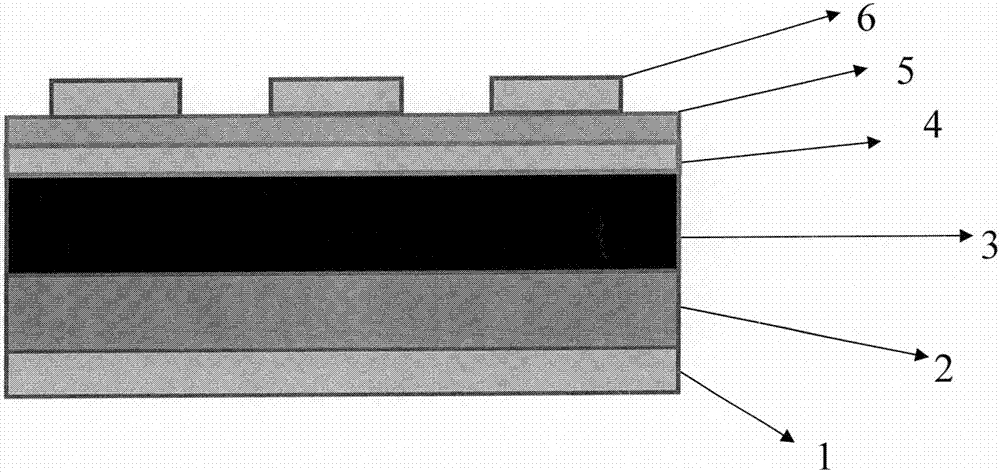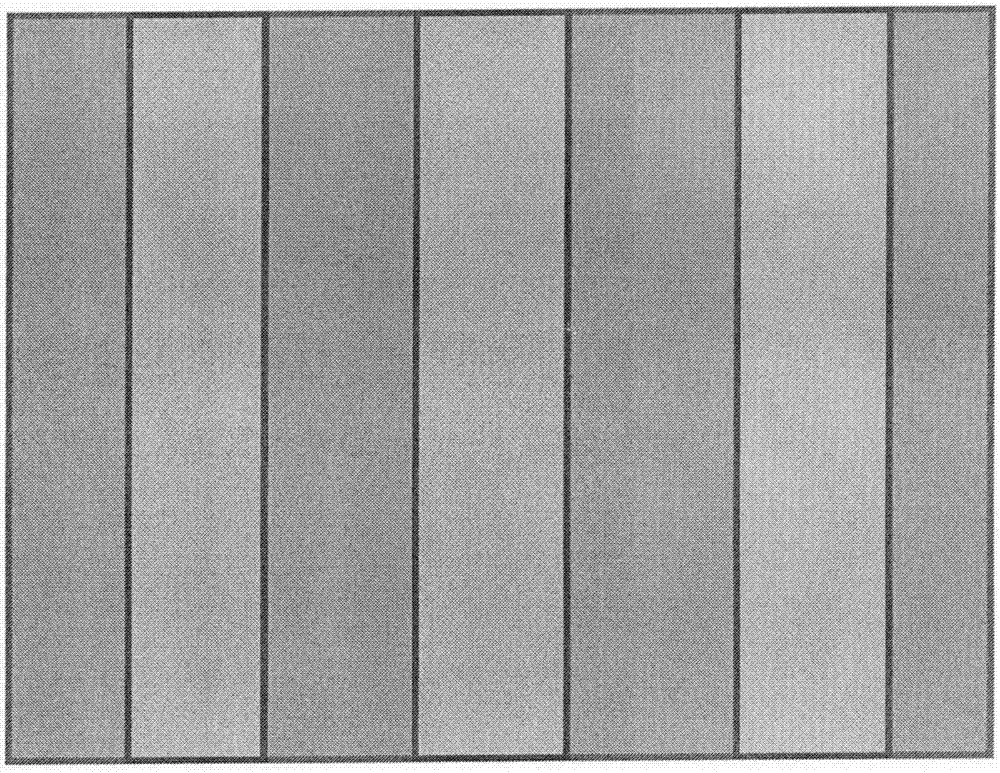Film solar cell with combination of perovskite monocrystalline material and P-type monocrystalline silicon and preparation method thereof
A technology of thin-film solar cells and single-crystal materials, applied in circuits, photovoltaic power generation, electrical components, etc., can solve the problems of low photoelectric conversion performance, insufficient stability, and easy to be affected, so as to avoid high production costs and avoid production. The process is cumbersome and the effect of improving instability
- Summary
- Abstract
- Description
- Claims
- Application Information
AI Technical Summary
Problems solved by technology
Method used
Image
Examples
Embodiment 1
[0057] A thin-film solar cell combined with perovskite single crystal material and P-type single crystal silicon, consisting of a bottom electrode, a dense zinc dioxide layer, C 60 Electronic thin film layer, single crystal perovskite light absorption layer, single crystal silicon hole transport layer, top electrode these six parts are matched with each other and combined together, constitute the combination of perovskite single crystal material and P-type single crystal silicon of the present invention thin film solar cells. The C 60 The electron thin film layer was evaporated on the surface of the perovskite single crystal, and the dense ZnO electron transport layer was sputter deposited on the C 60 On the surface of the electronic thin film layer, the single crystal silicon hole transport layer is deposited on the surface of the perovskite single crystal, and the film composed of aluminum or silver is plated on the surface of the dense ZnO electron transport layer and the ...
Embodiment 2
[0075] A thin-film solar cell combined with perovskite single crystal material and P-type single crystal silicon, consisting of a bottom electrode, a dense zinc dioxide layer, C 60 Thin film layer, single-crystal perovskite light-absorbing layer, single-crystal silicon hole-transporting layer, and top electrodes are combined together to form the combination of perovskite single-crystal material and P-type single-crystal silicon of the present invention. thin film solar cells. The C 60 The electronic thin film layer is evaporated on the surface of the perovskite single crystal, the dense ZnO electron transport layer is sputter deposited on the surface of the C60 electronic thin film layer, and the single crystal silicon hole transport layer is deposited to cover the perovskite single crystal. On the surface, films composed of aluminum or silver are plated on the surface of the dense ZnO electron transport layer and hole transport layer to form the bottom and top electrodes.
...
Embodiment 3
[0093] A thin-film solar cell combined with perovskite single crystal material and P-type single crystal silicon, consisting of a bottom electrode, a dense zinc dioxide layer, a C60 thin film layer, a single crystal perovskite light absorption layer, a single crystal silicon hole transport layer, and a top The six parts of the electrode and the electrode are matched and compounded together to form a thin-film solar cell in which the perovskite single crystal material and P-type single crystal silicon are combined in the present invention. The C60 electronic thin film layer is vapor-deposited on the surface of the perovskite single crystal, the dense ZnO electron transport layer is deposited on the surface of the C60 electronic thin film layer by sputtering, and the single crystal silicon hole transport layer is deposited to cover the perovskite On the surface of the ore single crystal, a film composed of aluminum or silver is plated on the surface of the dense ZnO electron tran...
PUM
| Property | Measurement | Unit |
|---|---|---|
| Thickness | aaaaa | aaaaa |
| Thickness | aaaaa | aaaaa |
| Thickness | aaaaa | aaaaa |
Abstract
Description
Claims
Application Information
 Login to View More
Login to View More - R&D
- Intellectual Property
- Life Sciences
- Materials
- Tech Scout
- Unparalleled Data Quality
- Higher Quality Content
- 60% Fewer Hallucinations
Browse by: Latest US Patents, China's latest patents, Technical Efficacy Thesaurus, Application Domain, Technology Topic, Popular Technical Reports.
© 2025 PatSnap. All rights reserved.Legal|Privacy policy|Modern Slavery Act Transparency Statement|Sitemap|About US| Contact US: help@patsnap.com


